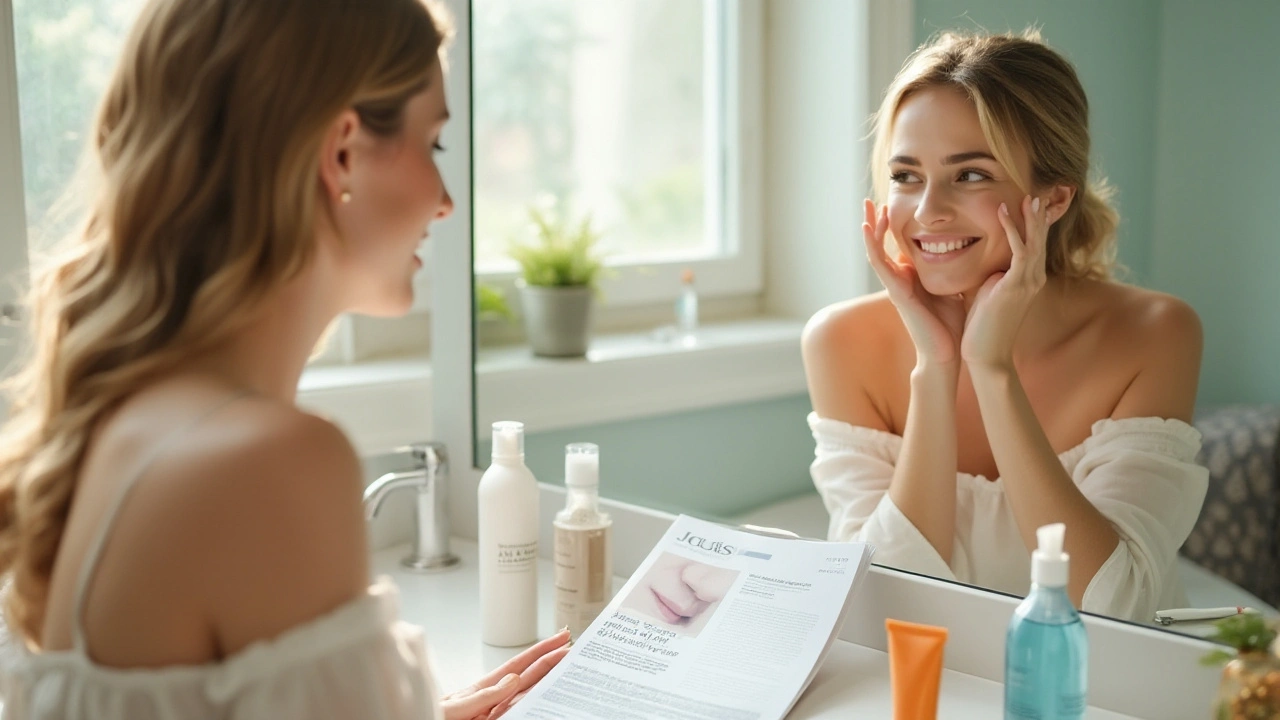Benzoyl Peroxide Combination Therapy — September 2024 Posts
This month we published a practical guide on benzoyl peroxide used in combination therapy for acne. The post explains how benzoyl peroxide works with other treatments, what benefits to expect, and simple tips to use it without overdoing irritation.
Benzoyl peroxide kills acne bacteria and peels away dead skin cells while reducing oil. Alone it helps many people, but it shines when paired with other medicines. For example, combining benzoyl peroxide with topical antibiotics cuts bacterial load faster and lowers the chance bacteria become resistant. Pairing it with a retinoid helps unclog pores and speeds cell turnover, so new pimples form less often.
How it works and common pairings
Benzoyl peroxide releases oxygen that harms acne-causing bacteria. It also loosens plugged follicles, so other drugs penetrate better. Common, effective pairings include benzoyl peroxide plus clindamycin, benzoyl peroxide plus erythromycin, and benzoyl peroxide with adapalene. Some combination products come pre-formulated to balance strength and reduce irritation. Do not mix raw products in the same application unless your dermatologist says it’s okay—formulated combos are safer.
Practical benefits you can expect
Expect fewer inflamed pimples within a few weeks and steady improvement over three months. Combination therapy often clears acne faster than single treatments. Using benzoyl peroxide with an antibiotic reduces the antibiotic dose needed and lowers resistance risk. When combined with a retinoid, it also helps prevent new comedones, improving texture and pore appearance.
Side effects are usually mild: dry skin, redness, and peeling. These often ease after a couple of weeks. If you get intense burning, swelling, or a spreading rash, stop use and see a doctor. Also remember benzoyl peroxide can bleach towels, pillowcases, and fabrics—apply carefully and let it dry before bed.
Start slowly: use a low concentration (2.5–5%) once a day for a week, then move to twice daily if your skin tolerates it. Moisturize with a non-comedogenic lotion and use sunscreen daily—retinoids and benzoyl peroxide can make skin more sensitive to sun. If you use a prescription retinoid, apply benzoyl peroxide at a different time of day to reduce irritation, unless your product is a combined formula.
If you’re pregnant or breastfeeding, check with your healthcare provider before starting new acne meds. People with very dry or sensitive skin may need weaker concentrations or alternate schedules. When in doubt, book a short consult with a dermatologist or pharmacist to tailor a plan to your skin type and current medications.
This archive entry highlights the practical, evidence-backed advantages of benzoyl peroxide combos and gives clear steps to use them safely. Read the full September post for deeper details, product examples, and dosing advice tailored to different skin types.
Examples: a 2.5% benzoyl peroxide gel used with 0.1% adapalene at night, or a benzoyl peroxide/clindamycin combo in the morning, often works well. Over-the-counter cleansers with benzoyl peroxide can help but usually are too gentle for severe acne. For cystic acne, see a specialist — you may need oral meds.
Track results with photos every two weeks and adjust with your provider if progress stalls. Keep records of other products used.
Effective Benefits of Benzoyl Peroxide in Combination Therapy
Discover the role of Benzoyl Peroxide in combination therapy for acne treatment. This informative guide delves into how Benzoyl Peroxide works with other medications, its benefits, and tips for effective use. Learn more about this powerful ingredient in your skincare regimen.
View More
